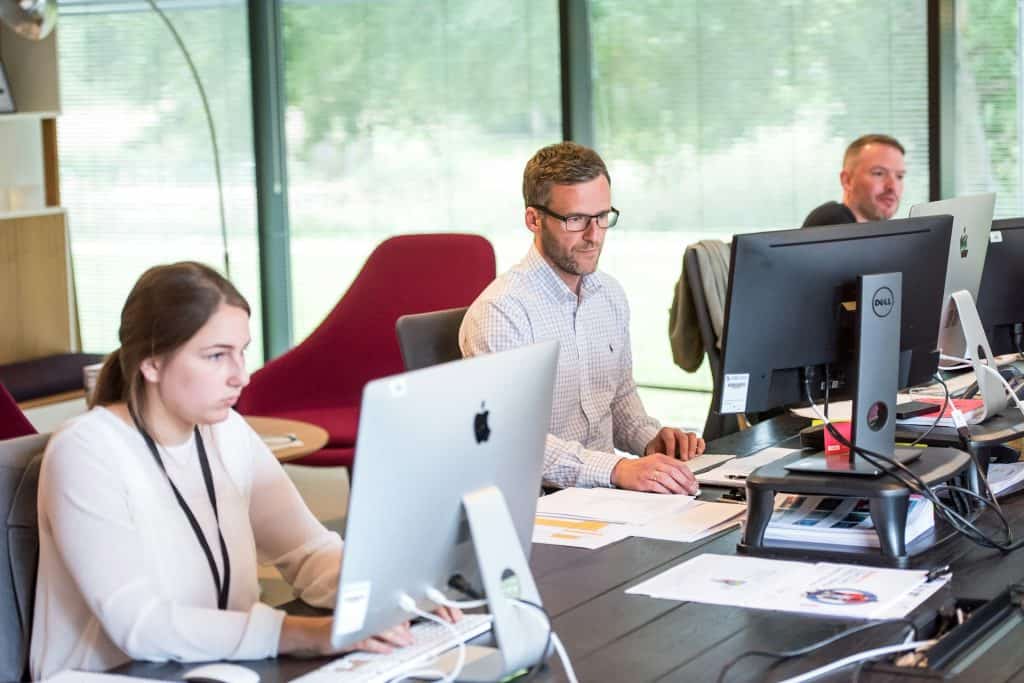The Return to Office Harms Productivity

In an ever-evolving business landscape, the conventional wisdom surrounding office work is ripe for a thorough reassessment. Recent studies, including Atlassian’s “Lessons Learned: 1,000 Days of Distributed at Atlassian” and Hubstaff’s detailed analysis of remote work productivity, provide compelling evidence that challenges long-held beliefs about the efficacy of traditional office environments. In short, the data shows that the return to office harms productivity.
Why the Return to Office Harms Productivity
Atlassian’s groundbreaking report, drawing on data from 200 CEOs from Fortune 500 and 1000 companies, delivers an unexpected verdict: mandating in-person work has minimal impact on productivity. This revelation is particularly striking as it comes from the upper echelons of corporate leadership, with one in three executives of companies that mandated some in-office work reporting that such physical office presence did not enhance productivity. Such findings call into question the longstanding assumption that physical colocation is synonymous with effective collaboration and output.
Hubstaff’s extensive research takes this conversation a step further. The data reveals that remote employees dedicate a substantial portion of their workweek to focused, undisturbed tasks, surpassing their office-based peers by a considerable margin. The details how, on average, remote employees enjoy about 273 minutes of quality, uninterrupted work each day. In contrast, their office counterparts manage only 223 minutes. This 22% increase in concentrated work time for remote employees is a telling statistic. It underscores how remote work, free from the typical office distractions of impromptu meetings and ambient noise, offers a more conducive environment for deep concentration.
This empirical evidence from Hubstaff challenges the common narrative surrounding remote work. Contrary to popular belief, remote workers are not besieged by distractions but have adapted to create workspaces and routines that foster concentration and productivity. This counters the stereotypical image of remote workers juggling household chores or succumbing to the lure of leisure within the home. Instead, they demonstrate a remarkable ability to balance professional and personal life, optimizing their time to ensure neither sphere is compromised.
Reducing Distractions
For roles that demand prolonged focus, such as programming, writing, and data analysis, the benefits of remote work are even more pronounced. Research from the University of California at Irvine, which found that it takes an average of 23 minutes to regain focus after an interruption, makes the argument for remote work’s productivity even more compelling. Traditional office environments, often rife with potential disruptions, contrast starkly with remote settings where such interruptions are markedly reduced.
This reduction in distractions is not just a matter of saving time. It leads to decreased stress, lower risk of errors, and enhanced job satisfaction. The ability to work in a controlled, personalized environment allows for a continuous flow of work, a crucial factor in roles where precision and meticulousness are key.
In light of these findings, the recent trends of mandating a return to the office seem increasingly out of step with the realities of modern work. Such mandates often hinge on the belief that physical presence boosts productivity and engagement. However, the evidence suggests that remote work, with its inherent flexibility and autonomy, can be more conducive to high-quality, focused work.
This is not to say that office work is without merit. Certain tasks and types of collaboration may benefit from in-person interaction. However, a one-size-fits-all approach to work location seems increasingly outdated. As businesses strive for agility and innovation, it becomes crucial to reconsider the traditional office model.
The data from Atlassian and Hubstaff paints a clear picture: the traditional office is not always the bastion of productivity it’s thought to be. As the business world evolves, so too must our conceptions of the work environment. Flexibility, rather than rigid adherence to traditional models, seems to be the key to unlocking higher productivity and job satisfaction in the modern workplace.
Key Take-Away
Data from Atlassian and Hubstaff shows that remote work significantly boosts productivity by reducing distractions, as remote employees experience 22% more uninterrupted work time than their office counterparts, highlighting that the office harms… Share on XImage credit: Arlington Research/unsplash
Dr. Gleb Tsipursky was lauded as “Office Whisperer” and “Hybrid Expert” by The New York Times for helping leaders use hybrid work to improve retention and productivity while cutting costs. He serves as the CEO of the boutique future-of-work consultancy Disaster Avoidance Experts. Dr. Gleb wrote the first book on returning to the office and leading hybrid teams after the pandemic, his best-seller Returning to the Office and Leading Hybrid and Remote Teams: A Manual on Benchmarking to Best Practices for Competitive Advantage (Intentional Insights, 2021). He authored seven books in total, and is best know for his global bestseller, Never Go With Your Gut: How Pioneering Leaders Make the Best Decisions and Avoid Business Disasters (Career Press, 2019). His cutting-edge thought leadership was featured in over 650 articles and 550 interviews in Harvard Business Review, Forbes, Inc. Magazine, USA Today, CBS News, Fox News, Time, Business Insider, Fortune, and elsewhere. His writing was translated into Chinese, Korean, German, Russian, Polish, Spanish, French, and other languages. His expertise comes from over 20 years of consulting, coaching, and speaking and training for Fortune 500 companies from Aflac to Xerox. It also comes from over 15 years in academia as a behavioral scientist, with 8 years as a lecturer at UNC-Chapel Hill and 7 years as a professor at Ohio State. A proud Ukrainian American, Dr. Gleb lives in Columbus, Ohio. In his free time, he makes sure to spend abundant quality time with his wife to avoid his personal life turning into a disaster. Contact him at Gleb[at]DisasterAvoidanceExperts[dot]com, follow him on LinkedIn @dr-gleb-tsipursky, Twitter @gleb_tsipursky, Instagram @dr_gleb_tsipursky, Facebook @DrGlebTsipursky, Medium @dr_gleb_tsipursky, YouTube, and RSS, and get a free copy of the Assessment on Dangerous Judgment Errors in the Workplace by signing up for the free Wise Decision Maker Course at https://disasteravoidanceexperts.com/newsletter/.

